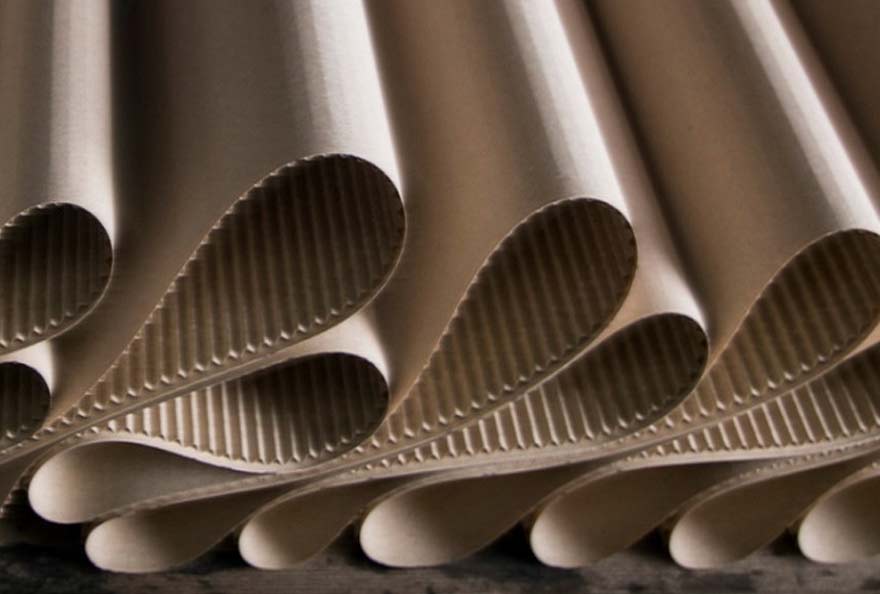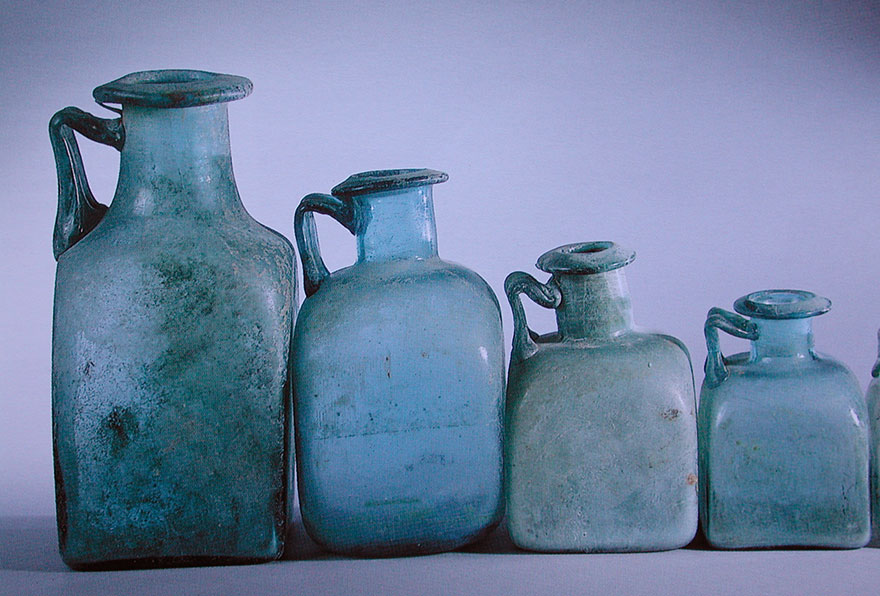If one were to compile a list of the most innovative materials, a quick internet search would suggest answers such as graphene, nanofibres or translucent concrete. Corrugated cardboard would not appear spontaneously. Indeed, it is difficult to imagine that a corrugated paper assembly glued between two sheets, intended in particular for packaging, would turn out to be a crucible of innovation. And yet ...
Invented in 1856 to make hats, corrugated paper, ancestor of the eponymous cardboard, is the work of two British manufacturers: Healley & Allen. At the time, they had a simple manual machine with a notch.
The first use of this material as packaging was in the United States in 1871, to package fragile objects such as bottles. At that time only single-sided material was used. Shortly afterwards, another American, Oliver LONG, had the idea of combining corrugated paper with a cardboard board to make the latter stronger.
From then on, the product was used more and more and American industrialists managed to obtain the rights to use this material and produce it on a large scale: today, 2.84 million tons of corrugated cardboard are produced per year in France, i.e. 5.42 billion m².
For more than 130 years, corrugated board has been declining its qualities to meet the needs of users and markets. It is a responsible, innovative and efficient material. Responsible and recyclable because it is recycled at 92%; innovative because it allows to adapt to societal evolutions (packaging, artistic creation...); efficient because more than a simple packaging, it disappears in favour of services for the consumer.
Sandwich material, corrugated cardboard consists of the assembly by gluing of flat cover papers held at equidistant intervals by corrugated corrugated corrugated papers whose profile thickness varies from approximately 1 mm to 8 mm and whose average weight is 575g/m². The covers contribute to the mechanical and climatic resistance of the packaging and serve as a communication and/or information support. The grooves ensure the rigidity of the packaging but also maximum elasticity since they act as shock absorbers in the event of shocks.

The double paradox of corrugated cardboard
Corrugated cardboard suffers from a double a priori. Omnipresent in the lives of manufacturers, distributors and consumers, it is hardly noticeable and is hidden behind the services it provides. This "curse" of packaging is reinforced by a very raw image of a material without diversity or nuances, while 130 years of research and development are hidden between its flutes.
In 1893, the first French corrugator - which then produced 3m of corrugated cardboard per minute compared to the current 300m - became a pillar of the industrial revolution at work: by facilitating the transport of goods and preserving their integrity, corrugated cardboard enabled consumption to reach a new scale and new populations.
In the 1960s, corrugated cardboard took part in the boom in mass distribution, further promoting the democratisation of the consumption of agri-food products under increasingly optimised hygienic conditions.
The third revolution, still at work: the acceleration of trade, including international trade, facilitated by the digitalization of transactions. If corrugated board has succeeded in making itself indispensable to the ever-changing logistics infrastructure, it is because it represents a model of responsible innovation that is particularly effective and faithful. Not forgetting its major societal role in the fight against waste, at a time when more than 30% of the world's food production is spoiled and destroyed every year due to lack of packaging.

No corrugated cardboard, no e-commerce, no drives, no drones...
In addition to developing solutions to accompany the major revolutions in world trade, corrugated cardboard has been able to question and innovate in its very essence: what other material can show an effective recycling rate of 96%? Or to boast that in just 15 years, it has succeeded in reducing the quantities of water and energy required for its manufacture by 30%, and its oxidizable material emissions by 70%?
This questioning has also enabled it to propose the solutions best suited to new distribution methods. This is the case of e-commerce, which grew by 140% between 2010 and 2016, a major consumer of corrugated cardboard and solutions that go beyond simple packaging. 24% of the products purchased online are returned by customers; the corrugated cardboard industry has had to offer reusable packaging, while improving security thanks to tamper-proofing systems, opening indicators, interior or exterior printing, etc.
Moving away from services
Beyond e-commerce, the development of new distribution logics - drives, collection points, ephemeral stores or deliveries by drones - also owes a great deal to the corrugated cardboard industry, which has been able to develop new characteristics (light, solid, rain-resistant), improve the adaptability of packaging (sizes, colours, manufacturing lead times) and invent new services ("ready-to-sell" developed for mass distribution, packaging traceability), without these improvements being visible to the eyes of users.
Who would suspect that a "simple" corrugated cardboard package contains so many innovations, so many hours of R&D, so many services rendered? Very few people.
What if discretion was its best catalyst for innovation? Because this is the strength of this extraordinary material: it disappears without a trace after having provided more and more services, to be reborn and always innovate. For more than a hundred years and for a few hundred more years to come. Like a good genius!

The French packaging industry is doing well. 2017 was a good year for corrugated cardboard, which is once again becoming a serious leading indicator of the economic situation. To establish their forecasts, economists look at what are called leading indicators, criteria that make it possible to anticipate the evolution of the gross domestic product, the wealth produced by a country over the year. Packaging is one of these indicators. When the industry packs, it means that it is selling, so there is activity in trade, transport and logistics.
For more information : www.cartononduledefrance.org













